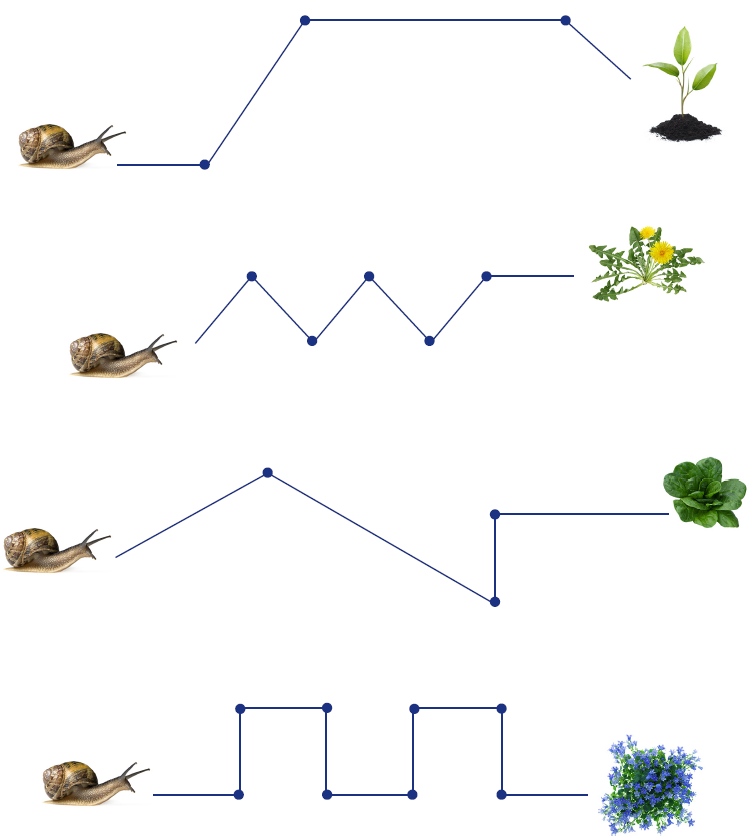This problem solving activity has a measurement focus.
Sally the Snail crawls 2cm each minute.
She needs to rest at each dot for 5 minutes.
She wants to take the shortest time to reach a plant.
Which path should she take?
- Measure using centimetres (cm).
- Solve problems using minutes as the unit.
- Devise and use problem solving strategies to explore situations mathematically.
This problem explores time in minutes and distance in centimetres.
The calculations involve single digit addition and multiplication, and afford opportunities for students to apply a range of strategies.
- Copymaster of the problem (English)
- Copymaster of the problem (Māori)
- Picture of a snail (for introduction)
- Centimetre rulers
The Problem
Sally the Snail crawls 2cm each minute. She needs to rest at each dot for 5 minutes. She wants to take the shortest time to reach a plant. Which path should she take?
(see the Copymaster for a picture of the paths)
Teaching Sequence
- Have the students estimate 2 cm using their fingers. Ask:
What do you use to estimate 2 cm?
How do we measure 2 cm? Model measuring and reading the scale accurately. - Introduce Sally the snail and the time it takes for her to travel 2 cm. Ask:
Do you think that 2 cm is reasonable? - Pose the problem for the students to work on with a partner.
- As the students work, ask questions that focus them on communicating the steps they take to solve the problem.
What was the first thing you did when solving the problem?
Could you solve it another way?
How do you know that you are correct? - Share solutions.
Extension
Get the students to create their own snail-path problem for others to solve. The may decide to vary the speed that Sally moves. The solutions will dependent on the problems posed and the numbers used.
Solution
Path 1: The snail has to travel 2 + 4 + 6 + 2 = 14 cm which takes 7 minutes. She has 3 rest stops which take 15 minutes. So the total time for the trip is 22 minutes.
Path 2: The snail has to travel 2 + 2 + 2 + 2 + 2 + 2 = 12 cm which takes 6 minutes. She has 5 rest stops which take 25 minutes. So the total time for the trip is 31 minutes.
Path 3: The snail has to travel 4 + 6 + 2 + 4 = 16 cm which takes 8 minutes. She has 3 rest stops which take 15 minutes. So the total time for the trip is 23 minutes.
Path 4: The snail has to travel 2 + 2 + 2 + 2 + 2 + 2 + 2 + 2 + 2 = 18 cm which takes 9 minutes. She has 8 rest stops which take 40 minutes. So the total time for the trip is 49 minutes.
Some students may add another 5 minutes for the final dot on each path but at that point Sally is already at the plant.
The path that takes the shortest time is path 1.
